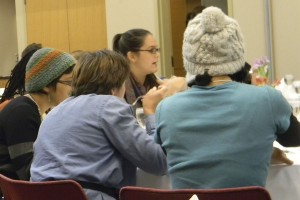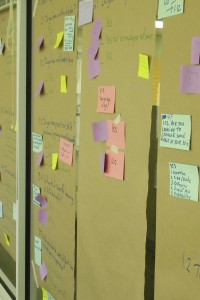I have been troubled for some time now about the number of instances I’ve observed of adults, in leadership positions, behaving in ways that seem unacceptable. These events raise in my mind a question of when and where we lost our way when it comes to common-sense civility.
My first lessons in civility came from my parents – be polite, show respect, and mind your manners. In school I was taught that it is possible to critique an idea and still show respect to the individual(s) promoting that idea. From conversations with colleagues and friends I know that these lessons were not unique to me.
So how is it that we seem to have arrived at a place in our society where civility counts for so little?
Dr P.M. Forni, a noted author in the field of civility, suggests that there are four major causes of incivility – stress, anonymity, lack of time, and lack of restraint.
Stress increases during times of scarcity. As our communities face diminishing resources we must anticipate that the stress levels of individuals will increase. Preparing for this by learning to be empathetic in the face of other’s pain can help moderate the effects of stress.
Strong community networks are a cure for anonymity. People need opportunities to tell their stories. Community members who are well-networked need to step forward and create spaces where everyone has a voice and where community members are mentored in how to contribute to civil discourse. Do not wait until an emotional issue presents itself — reach out during periods of calm. Identify yourself to those you don’t recognize and invite them to participate in community events.
Lack of time is the number one excuse provided for just about everything. “Why don’t you spend more time with your family? No time. Why don’t you volunteer more in your community? No time. Why don’t you eat better? No time.” Few of us would argue that life today is hectic but, the truth is that we all make time for what we value. If we value civil discourse then we must make time for it. And we must be good role models for the young people that are watching our behavior.
Lack of restraint may be the most challenging threat to civility. How do we instill in ourselves, and others, the understanding that the need for a personal win may have to be set aside in order to achieve the bigger objective of a win for the community? Some strategies include learning to separate the issue from the individual, avoiding escalation and avoiding personal misunderstandings. There are other strategies that will move us toward a more civil society but taking the first steps will be up to each of us.
We are not born civil. Civility is a code of behavior acquired by learning from others and by constant practicing. For the sake of our communities and ourselves, let us teach, let us learn, and let us practice. Dr. P.M. Forni
We would love to hear your thoughts on strategies for maintaining civility in public conversations. How does your community keeps emotional discussions civil?


 Does your organization have a Questioning Culture?
Does your organization have a Questioning Culture?  In our webinar,
In our webinar, 






